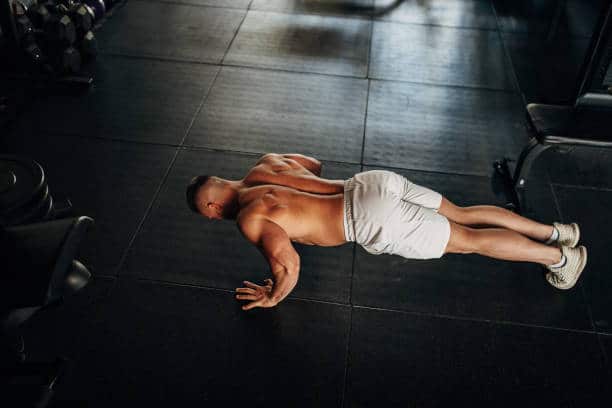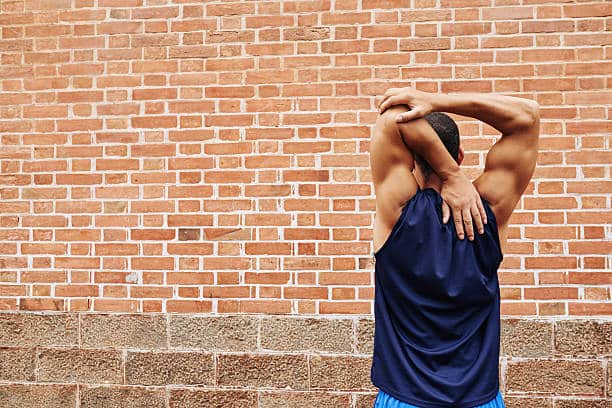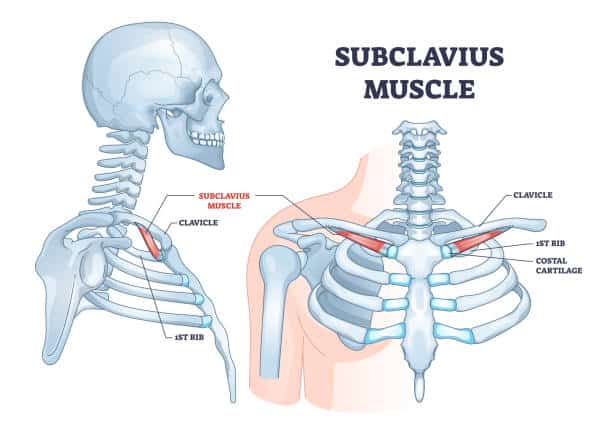
Subclavius Muscle Workout: Boost Shoulder Health
Did you know that 85% of shoulder injuries are linked to neglected muscles? The subclavius muscle, often overlooked, could be key to strengthening your shoulders and enhancing your performance. Incorporating subclavius muscle workouts can greatly improve shoulder conditioning and reduce the risk of injury.
Whether you’re working on shoulder rehab or aiming to boost shoulder stability, focusing on this small but significant muscle can lead to noticeable improvements.
Ready to learn more? Explore the substantial benefits of a focused subclavius muscle workout. This guide will delve into the muscle’s anatomy and provide practical exercises to help you achieve optimal shoulder health.
Understanding the Subclavius Muscle

Now, let’s delve into the specifics of the subclavius muscle. This often overlooked muscle plays a key role in our overall shoulder anatomy and function.
What is the Subclavius Muscle?
The subclavius muscle is a small but crucial muscle situated beneath the clavicle or collarbone. It plays a key role in linking the clavicle to the first rib and supports various shoulder movements. Its location makes it an integral part of the complex network of shoulder muscles.
Importance of Subclavius Muscle in Shoulder Health
Understanding the anatomy of the subclavius muscle is vital for maintaining shoulder health. This muscle stabilizes the clavicle, supporting proper posture and movement in the shoulder area. As a stabilizer, it helps reduce the risk of strains or injuries that can impact the entire shoulder complex.
Additionally, the subclavius absorbs shocks to the clavicle during upper-body movements, protecting the shoulder muscles from potential damage. Although it may play a quiet role, the subclavius is crucial for overall shoulder health and function.
Benefits of Strengthening the Subclavius Muscle

Focusing on the subclavius muscle can yield numerous advantages. These benefits extend beyond just shoulder strength, covering various aspects of shoulder health.
Improved Shoulder Stability
Strengthening the subclavius muscle is essential for improving shoulder stability. This muscle supports the clavicle, offering a stable foundation for the shoulder girdle. Consequently, you’ll experience fewer dislocations and strains. Enhanced stability ensures that your shoulder joints and muscles function together more harmoniously.
Prevention of Injuries
A strong subclavius muscle is vital for both injury recovery and prevention. Strengthening this muscle helps reduce the risk of common shoulder injuries, such as rotator cuff strains and impingements. Investing in subclavius muscle strength can make a significant impact, as prevention often outweighs treatment.
Enhanced Range of Motion
A well-conditioned subclavius muscle also enhances shoulder mobility and flexibility. Strengthening this muscle directly improves your shoulder’s range of motion. Greater flexibility not only benefits daily activities but also boosts athletic performance. Strengthening the subclavius muscle ensures smoother, more comfortable movement.
| Benefit | Description |
|---|---|
| Shoulder Stability | Reduced risk of dislocations and strains due to stronger shoulder girdle. |
| Prevention of Injuries | Lower occurrence of rotator cuff strains and shoulder impingements. |
| Range of Motion | Increased shoulder flexibility and mobility, enhancing daily activities and sports performance. |
Subclavius Muscle Workout Routine
Starting a dedicated subclavius muscle workout routine can significantly boost your shoulder health. By incorporating structured warm-up exercises, focusing on targeted subclavius muscle strengthening, and finishing with cool-down stretches, you’ll be well-prepared to enhance and maintain both shoulder strength and flexibility.
Warm-Up Exercises
Starting your workout routine with warm-up exercises is essential. I recommend beginning with dynamic stretches like arm circles and cross-body shoulder stretches. These activities boost blood flow and prepare your shoulder muscles for more intense exercises.
- Arm Circles: Perform small to large circular motions with your arms extended.
- Shoulder Rolls: Rotate shoulders forward and backward to loosen them up.
- Cross-Body Shoulder Stretch: Pull one arm across your body using the opposite hand to deepen the stretch.
Subclavius Muscle Strengthening Exercises
After warming up, it’s crucial to transition into exercises specifically designed to strengthen the subclavius muscle. Incorporate these exercises into your regular workout routine to effectively target and enhance shoulder strength.
- Clavicular Push-Ups: Perform standard push-ups with an emphasis on bringing the clavicle region closer to the floor.
- Overhead Dumbbell Press: Press dumbbells above your head, keeping your core tight and spine neutral.
- Single-Arm Resistance Band Pull: Use a resistance band to perform single-arm pulls, focusing on engaging the subclavius muscle.
Cool-Down Stretches
To wrap up your workout routine, it’s important to perform cool-down stretches. These stretches help maintain muscle elasticity and prevent stiffness after exercise.
- Doorway Stretch: Stand in a doorway, place your forearms on the frame, and lean forward for a deep stretch.
- Cross-Body Arm Stretch: Repeat the cross-body stretch to relax the shoulders further.
- Neck Tilt Stretch: Gently tilt your head to each side to relieve any tension in the upper shoulder and neck area.
This is a great way to increase the strength and flexibility of your shoulder muscles. Just follow the instructions. Recall that the best outcomes are achieved through consistency.
Common Mistakes to Avoid
Training the subclavius muscle can greatly enhance shoulder health, but it’s important to avoid common mistakes to ensure safety and effectiveness. Let’s explore these pitfalls.
Over-Exercising the Muscle
One common mistake is over-exercising the subclavius muscle. Excessive strain can result in injuries. Balance is crucial for a safe and effective workout. Adhering to proper exercise tips, including taking rest days for muscle recovery, is essential.
Ignoring Proper Form
Another common mistake is neglecting proper form during exercises. Maintaining the correct technique is crucial for reducing the risk of injury and maximizing workout benefits. Focus on your posture and movement patterns, and seek guidance from a professional trainer if you’re unsure.
Avoiding these common errors will improve your workout safety and help you achieve better results in strengthening your subclavius muscle.
How to Integrate Subclavius Muscle Workouts into Your Fitness Regimen
Incorporating subclavius muscle exercises into your fitness plan can be straightforward with a well-structured approach. Here are some strategies for seamless integration:
Start with a balanced training regimen. Your workout schedule should include a mix of cardio, strength, and flexibility exercises to avoid overloading any one muscle group, including the subclavius.
Next, integrate subclavius exercises into your existing shoulder workouts. For example, dedicate the last 10 minutes of your shoulder routine to these targeted exercises. This integration helps maintain muscle balance and prevent injuries.
Finally, track your progress with a logbook or fitness app to monitor how often you’re working on your subclavius muscles. Adjust your schedule as needed to ensure balanced training across all muscle groups.
Tips for Maximizing Your Workout
It takes awareness to get the most out of your subclavius muscle exercises. I’ve included some useful advice to increase the efficacy of your workouts below.
Consistency is Key
Consistency is key to optimizing your workout results. By establishing a regular exercise schedule, you ensure steady progress and enhanced muscle strength over time. A well-structured routine helps solidify these habits and supports continuous improvement.
Listening to Your Body
Body awareness is crucial for preventing overtraining and injuries. Be mindful of any signs of discomfort or strain, and take your body’s signals for rest seriously. This approach helps ensure sustainable progress and reduces the risk of setbacks.
The Role of Nutrition
Nutrition is vital for muscle recovery and development. A balanced diet, rich in proteins, vitamins, and minerals, supports muscle repair and replenishes energy. Incorporating nutrient-dense foods can greatly enhance your workout results and overall performance.
Tracking Progress and Setting Realistic Goals
![]()
Embarking on a journey to strengthen your subclavius muscle involves setting practical workout goals and consistently tracking your progress. Keeping a record of your shoulder health improvements can be a great motivator, helping you stay focused on achieving your fitness milestones.
One effective strategy is to log your exercises, reps, and sets in a journal or digital app. This approach makes it easy to compare your progress week over week. Tracking these details will reveal gradual improvements in shoulder stability, muscle endurance, and overall mobility, reinforcing your commitment.
Setting realistic expectations is key—focus on steady progress rather than quick fixes. Aim for incremental gains, such as a slight increase in reps or improved form. These smaller, manageable goals build up to significant achievements, and celebrating these milestones will keep you motivated and engaged.
Patience is crucial for long-term shoulder health. By setting achievable goals and consistently monitoring your progress, you’ll not only enhance your fitness but also protect your efforts from injury. With dedication and a well-structured plan, your subclavius muscle will become a cornerstone of your shoulder stability and strength.
FAQ
What is the Subclavius Muscle?
The subclavius muscle is a small muscle situated beneath the clavicle (collarbone). It plays a crucial role in stabilizing the shoulder and facilitating movement by anchoring the clavicle to the first rib.
Why is the Subclavius Muscle important for shoulder health?
The subclavius muscle is essential for maintaining shoulder stability and overall shoulder health. It helps position the clavicle, which can improve posture, prevent injuries, and enhance shoulder movements.
What are the benefits of strengthening the Subclavius Muscle?
Strengthening the subclavius muscle enhances shoulder stability, reduces the risk of injuries such as dislocations and strains, and improves the range of motion and flexibility in the shoulder girdle.
What should be included in a Subclavius Muscle workout routine?
An effective subclavius muscle workout routine should feature warm-up exercises to prepare the shoulders, targeted strengthening exercises for the subclavius, and cool-down stretches to maintain muscle elasticity and prevent stiffness. Incorporating rhomboid muscle strengthening exercises alongside subclavius-targeted workouts can enhance overall shoulder stability and posture. These complementary exercises help create a balanced shoulder girdle, reducing the risk of injury and improving functional movement. Regularly integrating this approach into a fitness regimen ensures a well-rounded program that supports both strength and flexibility.
What are common mistakes to avoid during Subclavius Muscle workouts?
Common mistakes include over-exercising the muscle, which can cause injury, and neglecting proper form, which reduces exercise effectiveness and increases injury risk. Paying attention to form and maintaining a balanced workout can help mitigate these risks.
How can I integrate Subclavius Muscle workouts into my fitness regimen?
To integrate subclavius muscle workouts into your fitness plan, balance them with other shoulder and upper body exercises. Seamlessly combine them with your current routine to avoid overtraining any specific muscle group.
How often should I exercise the Subclavius Muscle for optimal results?
Consistency is crucial for optimal results. Aim to incorporate subclavius muscle exercises into your routine 2-3 times a week while allowing sufficient rest and recovery to prevent overtraining and injury.
What role does nutrition play in Subclavius Muscle workouts?
Nutrition is essential for muscle development and recovery. A balanced diet rich in proteins, healthy fats, and carbohydrates supports muscle repair and maximizes the benefits of your workout.
How can I track my progress and set realistic goals for Subclavius Muscle workouts?
Track your progress by monitoring improvements in shoulder stability, mobility, and strength. Set realistic, manageable goals and celebrate fitness milestones. Understand that steady progress fosters lasting shoulder health and enhanced muscle function.



